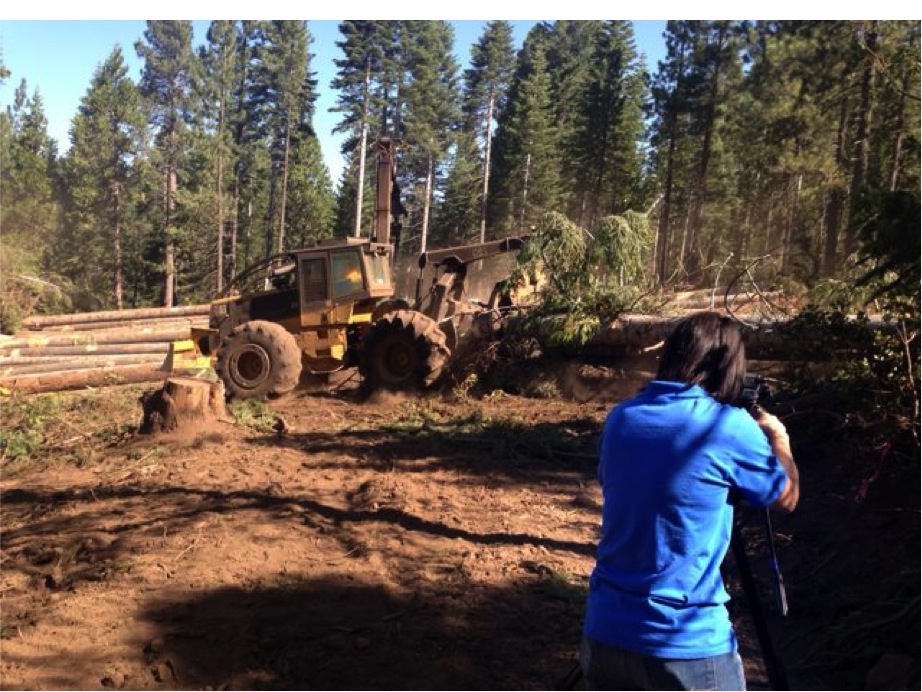 Channel 13 TV news reporter Leigh Martinez steps through a thicket of trees, brush, and dead branches. She points out to viewers that a huge percentage of the Stanislaus National Forest is choked with similar fuels.
Channel 13 TV news reporter Leigh Martinez steps through a thicket of trees, brush, and dead branches. She points out to viewers that a huge percentage of the Stanislaus National Forest is choked with similar fuels.
Moments later, John Buckley, CSERC’s executive director is shown standing in the forest beside a local logger. John firmly asserts: “Science-based logging, combined with prescribed burning, provides that middle-ground balance.”
Balance between what? And why would CSERC promote logging when the Center strongly opposes clearcuts? On private timberlands across California, companies such as Sierra Pacific Industries continue to do clearcut-type logging that strips most trees from 20-acre patches. For two decades, CSERC has strongly opposed such clearing and the resulting tree-farm plantations of even-age trees. But on national forest lands in the Sierra Nevada region, the U.S. Forest Service shifted long ago to “thinning logging” that leaves all large trees and many other plants. CSERC was part of a coalition of conservation groups that used appeals, lawsuits, and advocacy years ago to convince the Forest Service to shift to selective logging practices. Yet despite the benefits that come from thinning trees so that there aren’t dense thickets to burn intensely in wildfires, CSERC and other conservation groups have been concerned that evenly spaced thinned areas are not natural and may not meet wildlife needs.
In response to those concerns, over recent years Forest Service scientists have searched records and historic data to see what Sierra Nevada forests were like prior to logging and prior to firefighters, helicopters, and bulldozers. What they found was surprising.
Historically, natural Sierra Nevada forests were highly diverse, but they shared a common trait. Due to frequent low intensity wildfires started by lightning or set by Native Americans, most forest areas contained lots of scattered individual trees along with clumps of trees and openings. Scientists call it “ICO.” The open, park-like forests with scattered clumps of trees meant there were no dense blocks of forest to fuel hot wildfires. Fires were primarily beneficial.

